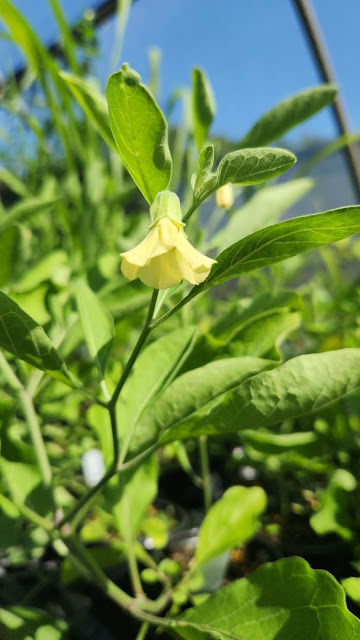Walter's groundcherry (Physalis walteri) is a perennial herbaceous species known more for its edible fruit than for its flowers. It is common statewide in Florida in a variety of upland habitats and also occurs in coastal counties within the Southeast Coastal Plain from Mississippi to Virginia.
Walter's groundcherry reaches a mature height of 12-18 inches and a width equal to that. Its leaves are ovate to lanceolate, 2-4 inches long and without teeth along the margins. They occur opposite each other on the stems and both the stems and leaves are covered in gray hairs.
Flowering can occur yearround in areas that don't freeze. The bell-shaped yellow blooms are distinctive and often have reddish lines/markings on both the outside and inside of the petals - unlike the photo above. Pollinated flowers produce a yellow "tomato" inside a dry papery husk - hence another common name of "husk tomato". The widely grown tomatillo (P. philadelphica) is a close relative and a better choice for the table, though Walter's groundcherry has been a staple food plant of native peoples for centuries.
This species is very infrequently offered for sale by nurseries associated with FANN - the Florida Association of Native Nurseries. It is easy to grow, but will spread over time if not kept controlled a bit. Although it cannot be considered "showy", it has value as a food source for wildlife and human consumption and it is a host for the Carolina sphinx moth.
These photos were taken in the propagation area at the USF Botanical Gardens, Tampa, where we have it under cultivation.




No comments:
Post a Comment
Please let me know if this site and the various postings have been useful to you.